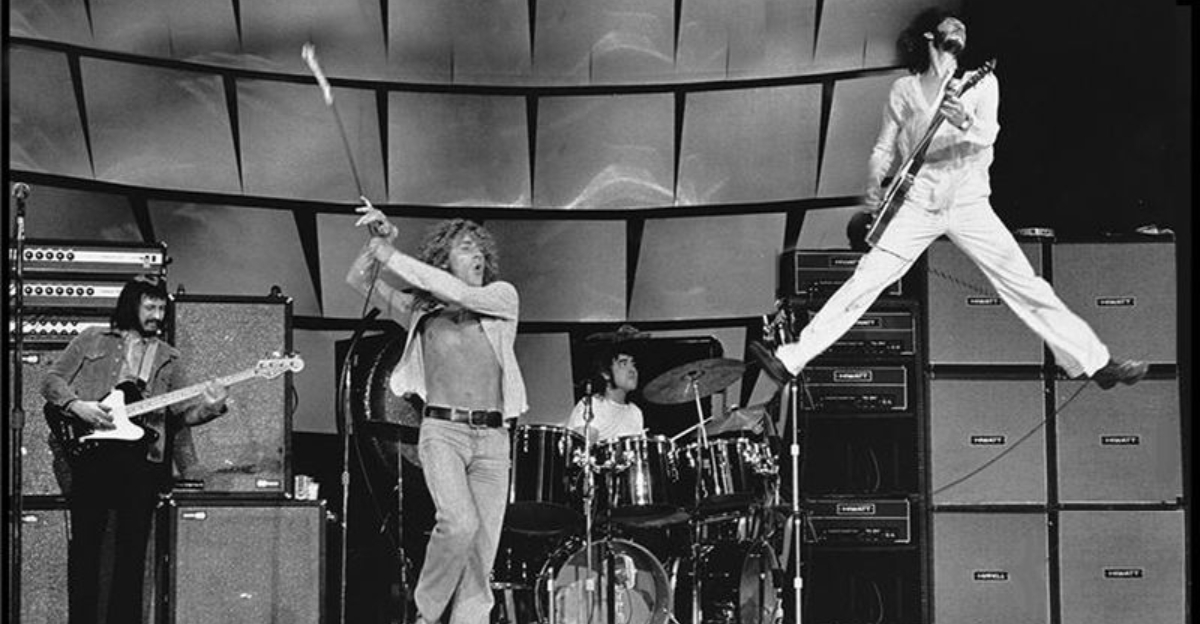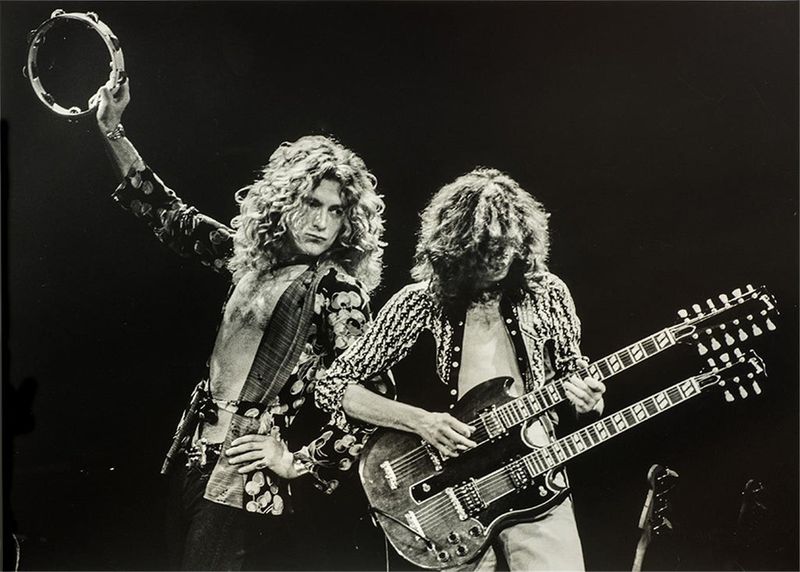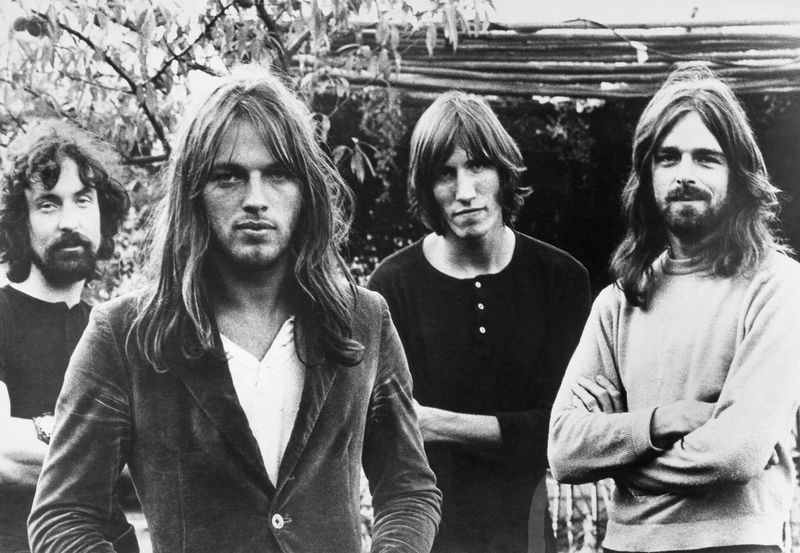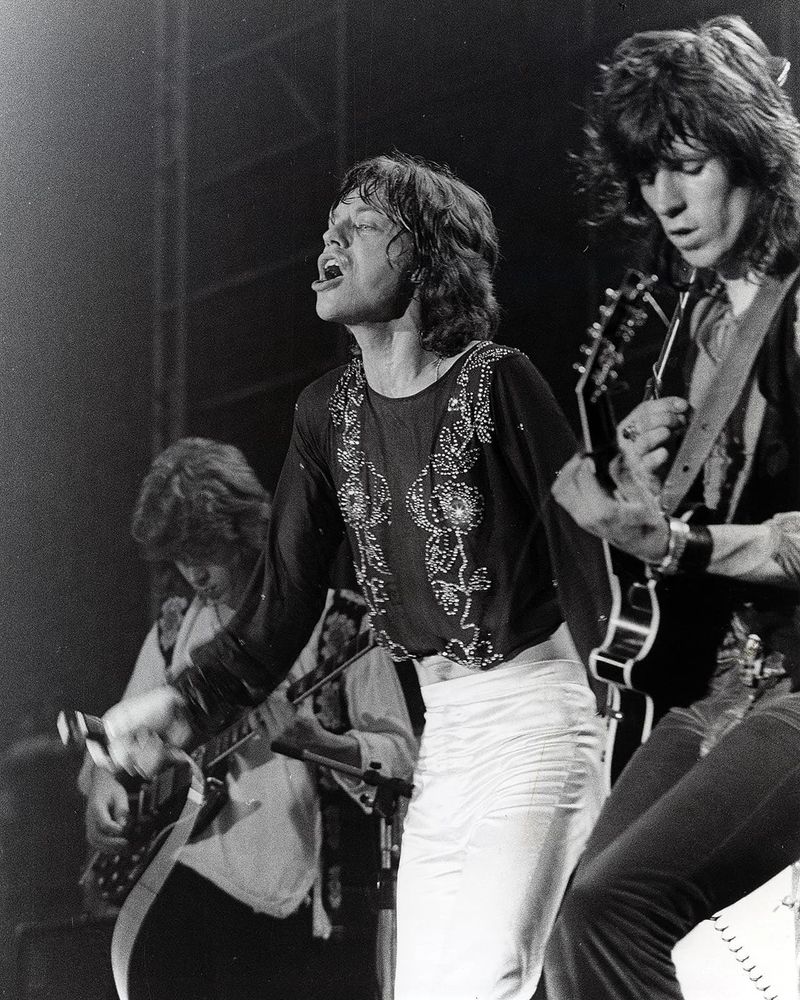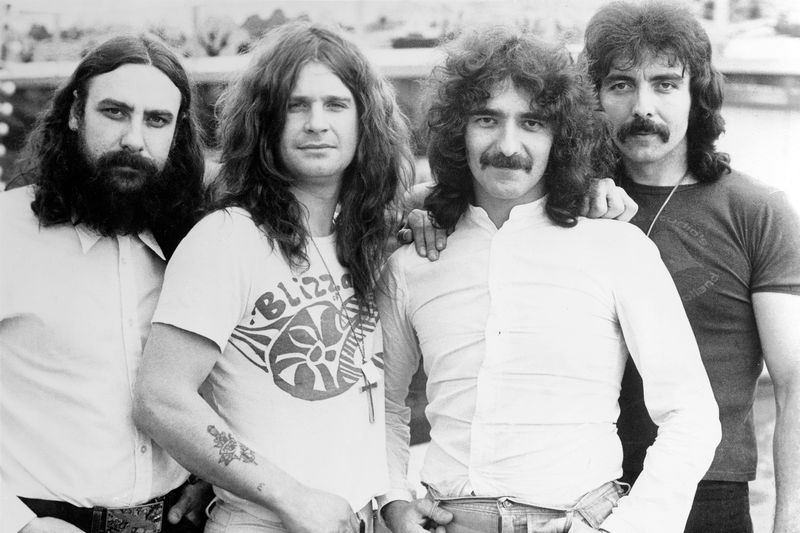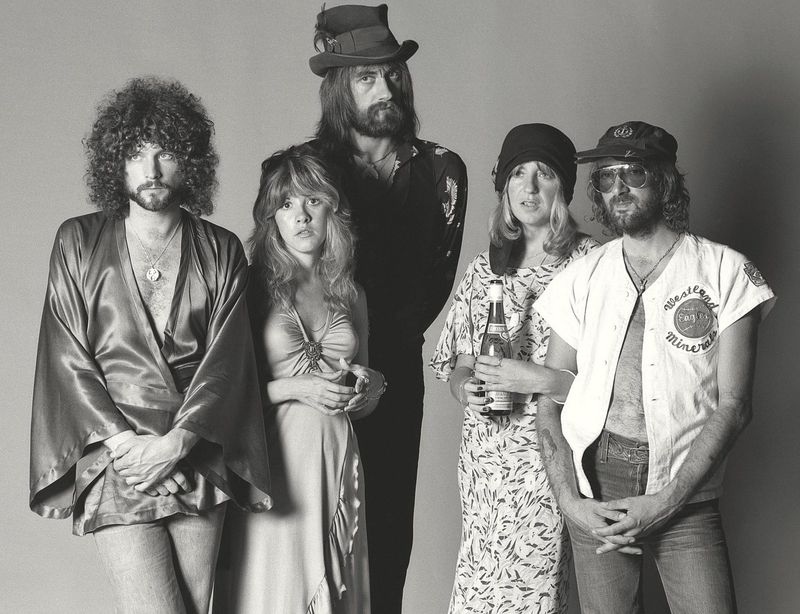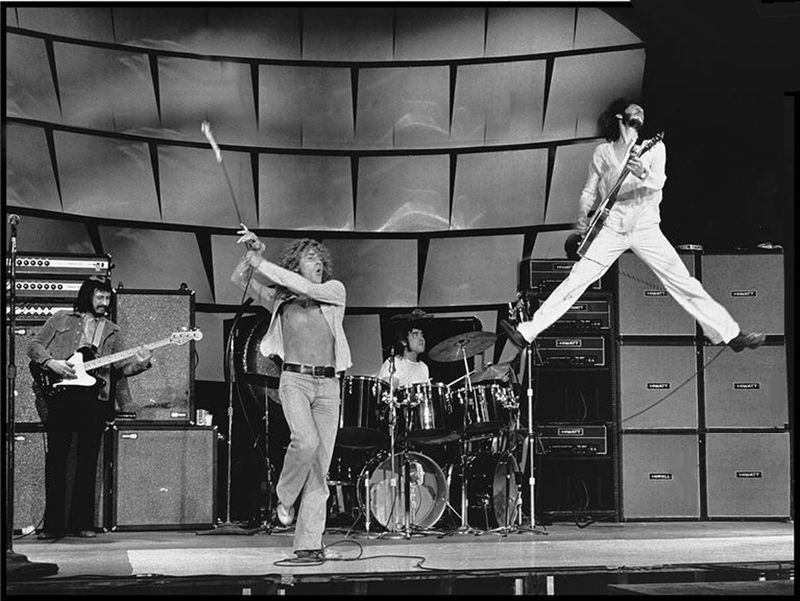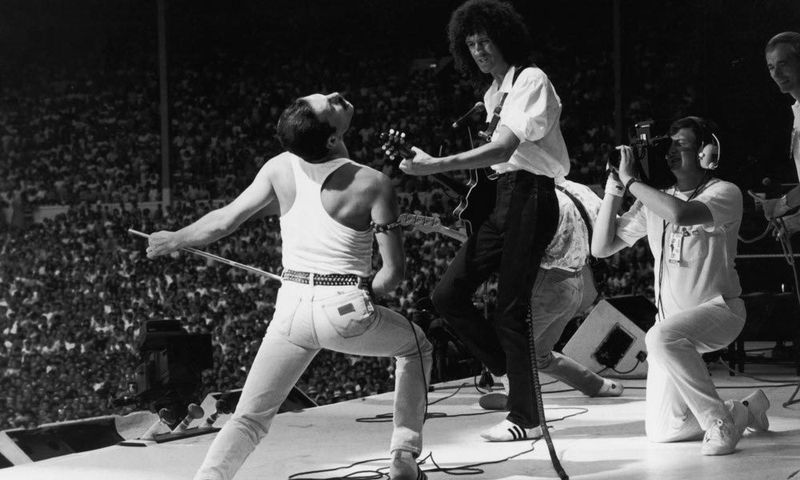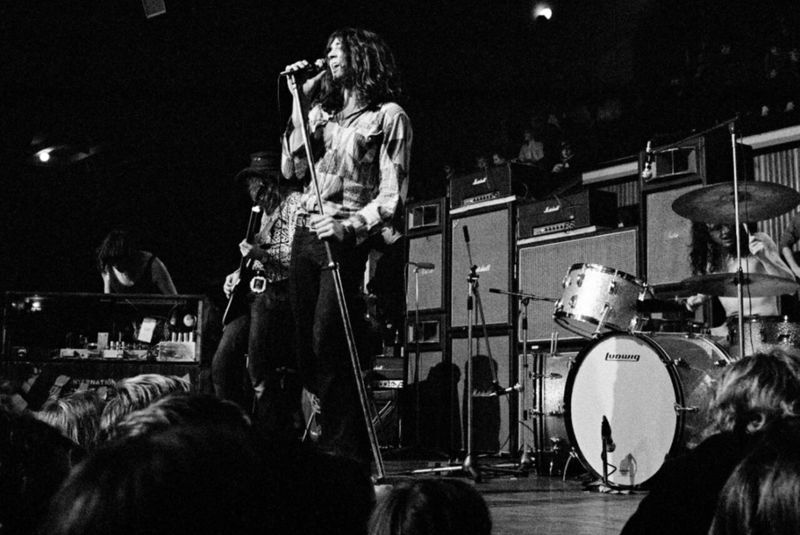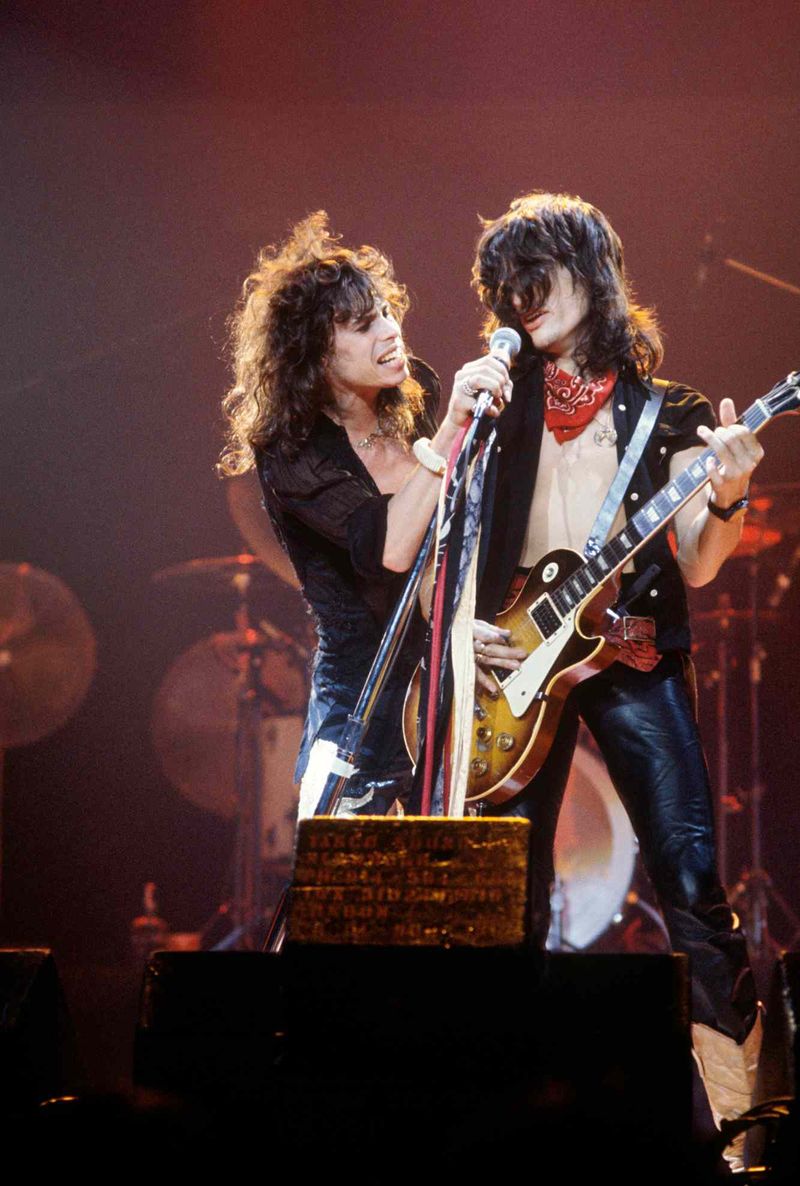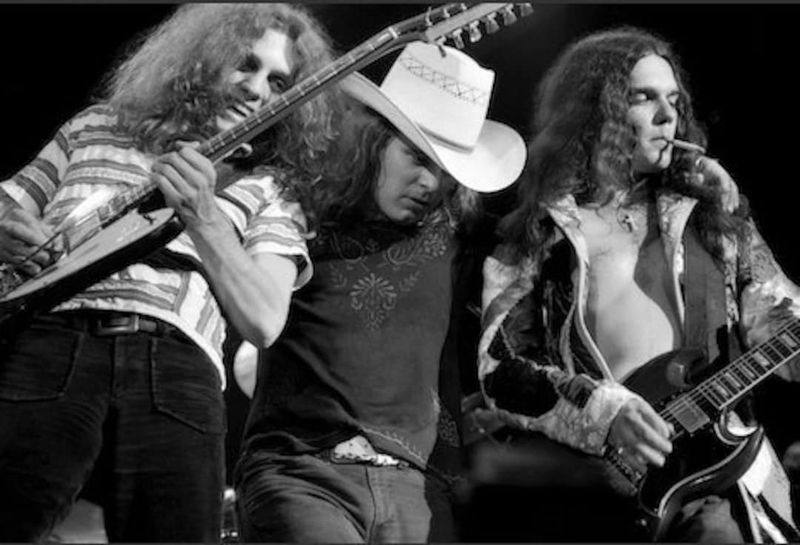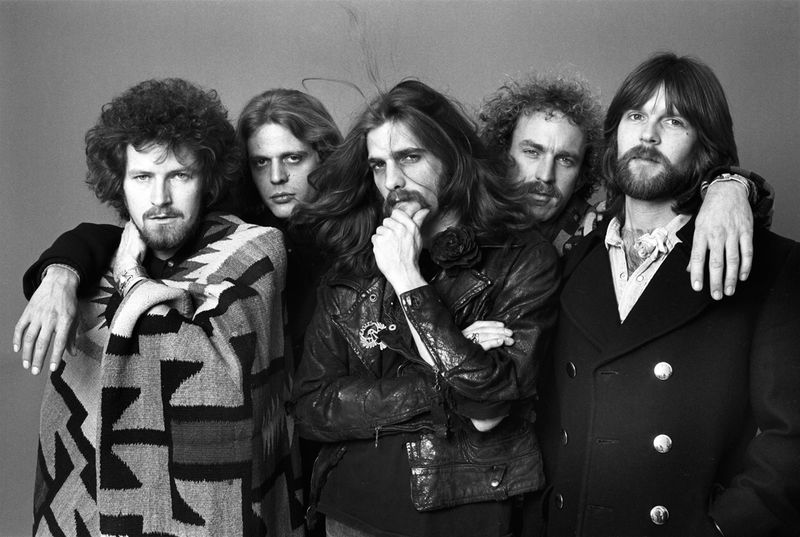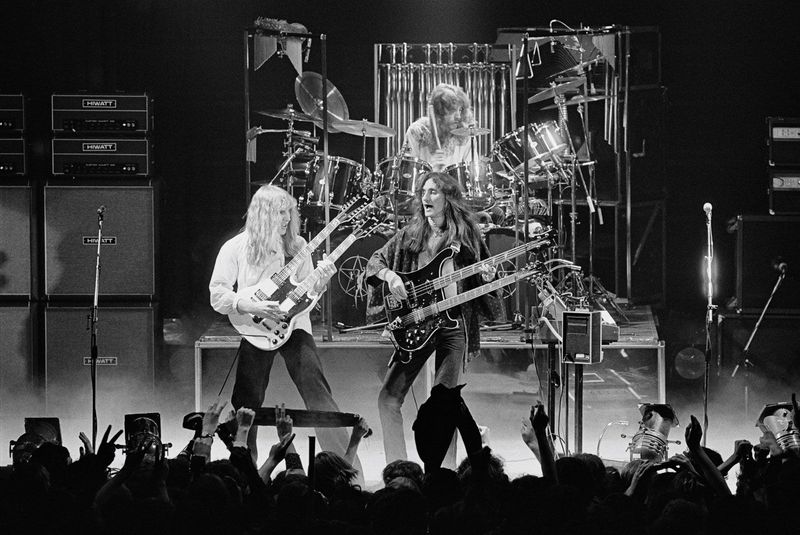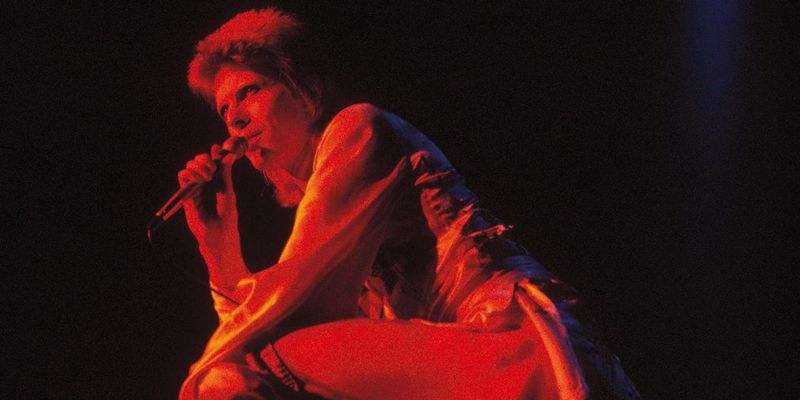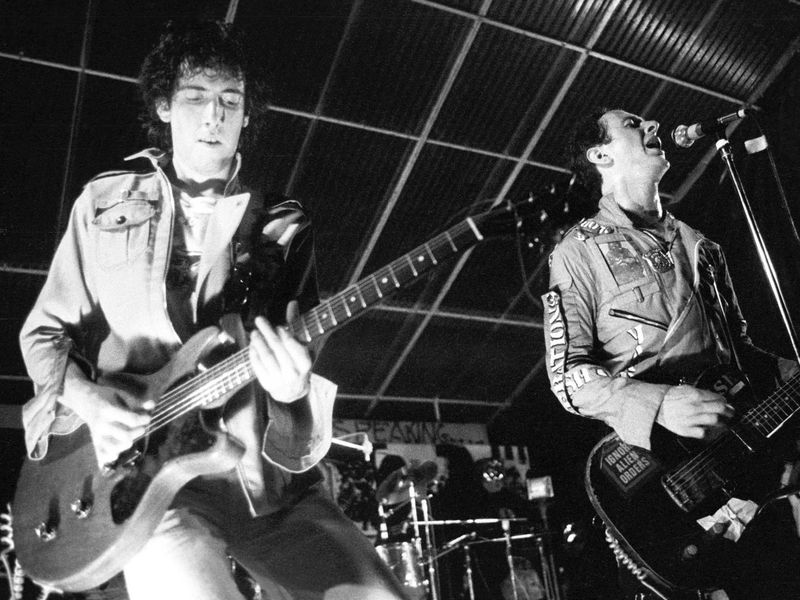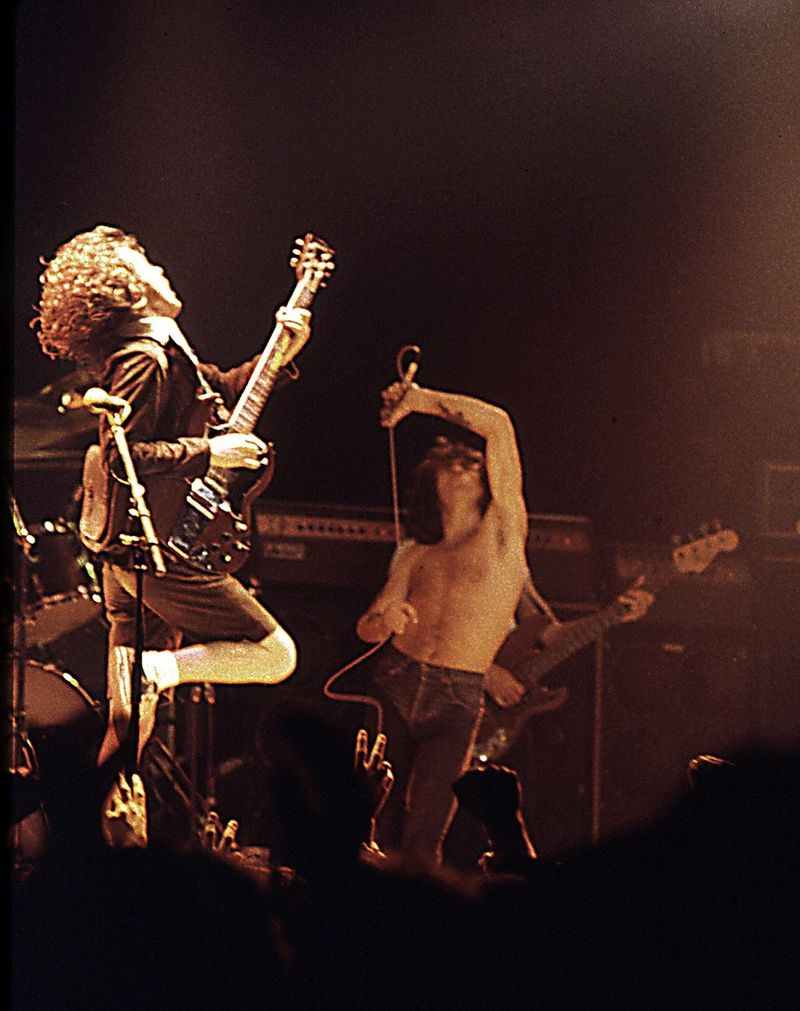The 1970s rocked our world with bands that changed music forever. This golden era saw the birth of hard rock, punk, and glam that still echo in today’s hits. These legendary groups didn’t just top charts—they created new sounds, pushed boundaries, and inspired countless musicians who followed in their wake.
1. Led Zeppelin: The Hammer of the Gods
Thunder roared when Jimmy Page’s guitar met Robert Plant’s wailing vocals. These hard rock pioneers crafted a mystical blend of blues, folk, and bone-crushing power that forever altered music’s landscape.
Their epic “Stairway to Heaven” remains a rite of passage for guitarists worldwide, while “Kashmir” showcases their experimental genius. Albums like “Physical Graffiti” demonstrated their versatility beyond hard rock.
Modern bands from Jack White to Greta Van Fleet channel Zeppelin’s DNA, proving their blueprint remains relevant decades later. Even hip-hop producers regularly sample their thunderous drum breaks.
2. Pink Floyd: Architects of the Mind
Sonic explorers who transformed albums into complete journeys rather than collections of songs. Their masterpiece “Dark Side of the Moon” spent an astonishing 15 years on Billboard charts—a testament to their timeless appeal.
David Gilmour’s soaring guitar solos and Roger Waters’ thought-provoking lyrics created landscapes where music and philosophy merged. Their revolutionary use of studio technology expanded what rock music could achieve.
Radiohead, Tool, and countless modern artists build on Floyd’s foundation of conceptual storytelling and atmospheric soundscapes. Their laser-light shows revolutionized concert experiences forever.
3. The Rolling Stones: Eternal Bad Boys
Already legends by the ’70s, Mick Jagger and Keith Richards reached their creative zenith with albums like “Sticky Fingers” and “Exile on Main St.” Their swagger-filled performances defined rock star attitude for generations.
While other bands chased trends, the Stones perfected their bluesy, gritty sound that felt dangerous yet irresistible. “Brown Sugar” and “Tumbling Dice” showcase their ability to make complex musicianship feel effortlessly cool.
Their tongue logo remains among music’s most recognizable symbols. Bands from Aerosmith to The Black Crowes built careers on the Stones’ blueprint, while their influence extends into fashion and cultural rebellion.
4. Black Sabbath: Masters of Darkness
From Birmingham’s industrial wasteland emerged the sound of thunder. Tony Iommi’s down-tuned guitar created the blueprint for heavy metal after losing fingertips in a factory accident—necessity birthing revolutionary invention.
Ozzy Osbourne’s haunting vocals floated over ominous riffs in songs like “Paranoid” and “Iron Man.” Their sinister imagery and crushing heaviness provided the perfect soundtrack for a generation facing harsh realities.
Every metal subgenre—from thrash to doom—owes a debt to Sabbath’s innovations. Even their slower, drug-hazed moments influenced stoner rock decades before the genre had a name.
5. Fleetwood Mac: Beautiful Chaos
Romance and heartbreak fueled rock’s greatest soap opera. The band’s tangled relationships—divorces, affairs, and reconciliations—created the emotional rawness behind “Rumours,” one of history’s best-selling albums.
Stevie Nicks brought mystical femininity while Lindsey Buckingham delivered guitar genius. Their harmonies balanced folk-rock traditions with pop sensibilities, creating a sound both accessible and musically sophisticated.
Modern artists from Taylor Swift to Haim draw from their emotional songwriting template. Their ability to transform personal drama into universal art remains their greatest legacy, teaching musicians that vulnerability creates the most powerful connections with audiences.
6. The Who: Rock’s Explosive Visionaries
Keith Moon attacked his drums like they’d insulted his mother. Pete Townshend windmilled his arm and smashed guitars while Roger Daltrey swung microphones like lassos—creating rock’s most kinetic live experience.
Beyond theatrics, they pioneered the rock opera with “Tommy” and “Quadrophenia,” elevating rock to high art. Their anthems like “Baba O’Riley” and “Won’t Get Fooled Again” captured youthful rebellion in power chord perfection.
Pearl Jam’s intensity and Green Day’s rock operas directly descend from The Who’s innovations. Their fusion of art-school concepts with working-class energy created a template for intellectually ambitious rock that still resonates.
7. Queen: Royal Rock Revolutionaries
Four college students became rock royalty through sheer audacity. Freddie Mercury’s four-octave voice soared over Brian May’s orchestral guitar work, creating operatic rock that defied categorization.
“Bohemian Rhapsody” broke all rules—a six-minute rock opera with no chorus that topped charts worldwide. Their genre-hopping brilliance took them from heavy metal (“Stone Cold Crazy”) to disco (“Another One Bites the Dust”) without losing their essence.
Their stadium-filling anthems like “We Will Rock You” created the template for audience participation. Lady Gaga, Muse, and countless others build on Queen’s theatrical foundation, while their harmonies influence bands across all genres.
8. Deep Purple: The Loudest Band in the World
Once certified by Guinness as the planet’s loudest band, Deep Purple’s sonic assault changed rock forever. Ritchie Blackmore’s classical-influenced guitar dueled Jon Lord’s Hammond organ to create a distinctive wall of sound.
“Smoke on the Water” boasts rock’s most recognizable riff—four notes that launched millions of guitar dreams. Their rotating lineup showcased extraordinary musicians who balanced technical virtuosity with raw power.
Metallica, Iron Maiden, and countless others built on Purple’s foundation. Their album “Machine Head” remains a masterclass in hard rock production, while their live album “Made in Japan” set standards for concert recordings that few have matched.
9. Aerosmith: America’s Bad Boys
Boston’s finest combined Rolling Stones swagger with hard rock crunch. Steven Tyler’s scarves and Joe Perry’s guitar slinging created the ultimate American rock band—equal parts blues, glamour, and street-tough attitude.
“Dream On” showcased their power ballad mastery while “Sweet Emotion” demonstrated their funky strut. Despite nearly destroying themselves with legendary drug consumption, their raw talent always shone through the chaos.
Guns N’ Roses followed their blueprint of danger and virtuosity. Their remarkable second act in the late 80s proved their adaptability, while their bluesy foundation connects them to both rock’s past and future, influencing everyone from Mötley Crüe to Rival Sons.
10. Lynyrd Skynyrd: Southern Rock Pioneers
Three guitar attack and working-class poetry defined this Jacksonville powerhouse. Their nine-minute epic “Free Bird” became rock’s ultimate encore, while “Sweet Home Alabama” turned regional pride into a universal anthem.
Ronnie Van Zant’s straightforward lyrics spoke to everyday struggles and triumphs without pretension. Their tragic 1977 plane crash cut short their rising trajectory but cemented their legendary status.
Every country-rock hybrid from The Black Crowes to Blackberry Smoke follows their roadmap. Beyond the music, they pioneered the connection between Southern identity and rock authenticity, creating space for regional voices in a genre often dominated by urban and British perspectives.
11. The Eagles: California’s Smooth Operators
Harmony-rich storytellers who defined the California sound. Don Henley and Glenn Frey led this collection of extraordinary songwriters who blended country roots with rock edge and pop accessibility.
“Hotel California” remains their masterpiece—mysterious lyrics and dueling guitar solos creating an enduring radio staple. Their perfectionism in the studio set new standards for production quality in rock music.
Modern country stars from Keith Urban to Lady A draw from their template of polished vocal harmonies. Beyond music, they embodied the California dream—success, artistic freedom, and the darker undercurrents beneath the sunshine, themes that continue to resonate in contemporary Americana.
12. Rush: Progressive Virtuosos
Canadian power trio who elevated musicianship to dazzling heights. Neil Peart’s philosophical lyrics and otherworldly drumming combined with Geddy Lee’s distinctive vocals and bass wizardry to create complex yet catchy compositions.
“2112” demonstrated their willingness to create side-long epics while “Tom Sawyer” proved they could condense their ambitions into perfect radio format. Their devoted fanbase mimicked their hero’s dedication to instrumental mastery.
Modern prog bands like Dream Theater and Coheed and Cambria build directly on Rush’s foundation. Their evolution from heavy rock to synthesizer experimentation showed progressive music could embrace new technology while maintaining artistic integrity—a lesson still followed by forward-thinking musicians.
13. David Bowie: The Chameleon of Rock
Rock’s greatest shapeshifter reinvented himself constantly. His Ziggy Stardust persona—an alien rock messiah—revolutionized performance art while albums like “Heroes” pushed sonic boundaries alongside producer Brian Eno.
Bowie’s androgynous appearance challenged gender norms decades before such conversations entered the mainstream. His collaboration with guitarist Mick Ronson created a template for glam rock that balanced theatrical excess with musical substance.
Artists from Madonna to Lady Gaga to Harry Styles follow his reinvention playbook. Beyond music, his fashion sense influenced designers worldwide, while his willingness to explore sexuality and identity in his art opened doors for countless artists to express themselves authentically.
14. The Clash: Punk’s Revolutionary Voice
Self-proclaimed “only band that matters” merged punk fury with political conscience. Joe Strummer and Mick Jones created anthems that tackled racism, imperialism, and class struggle while expanding punk’s musical vocabulary.
“London Calling” incorporated reggae, rockabilly, and jazz into punk’s framework, proving rebellion didn’t require musical simplicity. Their DIY ethic and anti-establishment stance created a template for politically engaged rock.
Bands from Green Day to Rage Against the Machine built on their foundation of music-as-activism. Their evolution from three-chord punk to genre-blending experimentation showed artists could grow without compromising principles—a lesson alternative bands still follow when balancing commercial success with artistic integrity.
15. AC/DC: High Voltage Rock Machines
Australian brothers Malcolm and Angus Young created rock’s most reliable formula. Angus’s schoolboy uniform and duck-walking theatrics complemented vocalist Bon Scott’s raspy howl to create party anthems that celebrated rock’s rebellious spirit.
“Highway to Hell” exemplified their straightforward brilliance—three chords, catchy chorus, and attitude for days. After Scott’s 1980 death, Brian Johnson stepped in for “Back in Black,” creating rock’s greatest comeback album.
Their refusal to follow trends kept them relevant through disco, punk, and beyond. Guns N’ Roses, Airbourne, and countless others built careers on AC/DC’s blueprint of no-frills rock and roll, proving sometimes the simplest approach has the most staying power.
